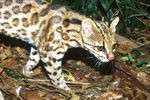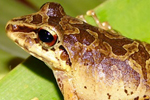Scientists have discovered the gene enabling multiple female morphs that give the Common Mormon butterfly its very tongue-in-cheek name. doublesex, the gene that controls gender in insects, is also a mimicry supergene that determines diverse wing patterns in this butterfly, according to a recent study published in Nature. The study also shows that the supergene is not a cluster of closely-linked genes as postulated for nearly half a century, but a single gene controlling all the variations exhibited by the butterfly’s wings.
Thanks to a medley of shapes, sizes, colors and patterns, butterfly wing variations have helped scientists understand evolution in numerous ways. Intense predator pressures have forced butterflies to evolve different tactics to ward them off. Some butterflies have evolved to feed on toxic plants, and consequently, are inedible and toxic themselves. Predators think twice before attacking them. In response to this, palatable butterflies have developed a rather devious tactic: they imitate the wing patterns of toxic butterflies found in the region, a phenomenon known as Batesian mimicry. Usually, females of such species mimic a toxic model as they are more prone to predation than males. Sexual dimorphism (marked differences in gender) in mimetic butterflies is often a result of this, such as the Danaid eggfly female which imitates the Plain tiger.
In some cases, females of a single mimetic species imitate not one, but several toxic species. This results in multiple female forms or morphs: what scientists call polymorphism. The widespread Asian butterfly, the Common Mormon (Papilio polytes) is a perfect example of this. The male has a single non-mimetic wing pattern but the female has four forms: a non-mimetic morph that resembles the male, and three other forms that mimic the toxic butterflies in the genus Pachliopta found around them. These females mimic the colors, wing patterns and even shape of their Pachliopta models, right down to their small tail-like projections on the hindwings.

Female Common Mormon (Papilio polytes). Photo by: Geeta Samant.
This undoubtedly impressive natural phenomenon drew the attention of geneticists in the 1960s. They speculated that alternative wing patterns are controlled by a supergene, which had to be a cluster of tightly-linked genes located near each other. These genes would control specific attributes of wing patterning such as the presence or absence of tails, color differences on the forewing and so on.
So which supergene controls the numerous wing pattern variations of the Common Mormon? What genes constitute this supergene? And how do these genes produce the mimetic morphs? These were the questions scientists Krushnamegh Kunte from the National Centre for Biological Sciences in India, Wei Zhang and Marcus Kronforst both from the University of Chicago, and their colleagues from the universities of Cornell and Boston sought to answer. They used a method called genetic mapping, a process of determining the precise position of the gene that controls a particular biological trait. This involved breeding different lineages of female morphs and studying genetic variation among them. Employing highly-specialized genetic tools and analytic tests to compare the DNA sequences and genomes of these butterflies, the scientists located five genes including doublesex that could be controlling wing pattern variation.
Surprised, the scientists conducted more tests to determine the role of doublesex in the Common Mormon. This included sequencing genomes, examining single nucleotide polymorphisms and genome-wide association studies – some of the most modern methods that have been developed to examine genetic variations and analyze the associations between them. Interestingly, doublesex turned out to be the primary gene associated with mimetic wing patterns, pointing to the pivotal role of the gene in mimicry.
“The co-option of this well-known sexual differentiation gene in controlling polymorphic mimicry was indeed an unexpected and exciting discovery,” said Kunte.
 Female morphs of the Common Mormon. Picture courtesy of Krushnamegh Kunte. |
But how does doublesex double as a gender differentiator and a mimicry generator? The scientists discovered that doublesex is a hotspot of molecular evolution: dozens of very minute genetic changes or mutations in the regions that make proteins and thousands of mutations in other regions of this gene distinguished the mimetic morph from the other. The team found that the answer also lay in the proteins that doublesex can concoct. A single gene can perform different functions if it makes different proteins. The scientists found that doublesex did manufacture different proteins in males and females, which were expressed at varying intensities in the mimetic and non-mimetic forms. They also simulated structures of the doublesex proteins in mimetic and non-mimetic female forms and found them to be substantially different.
“Differences in protein structure and gene expression among the female forms play a role in making doublesex the ultimate mimicry gene,” said Zhang.
However, such differences can be lost during recombination, the usual shuffling of genetic variation at the time of sexual reproduction. When the scientists re-examined their vast genomic and mapping datasets, they discovered that recombination was prevented exactly at the location of doublesex. Based on such reduced recombination and single gene control, the authors argue that a mimicry supergene can be a set of numerous closely-linked mutations in a single gene and not necessarily a cluster of several tightly-linked genes as theorized for the past half century.
“It would be intriguing to know exactly what those parts are, how they function, how they contribute individually and together to the full ‘integrated’ phenotype (the mimicry pattern). And importantly, how this can have evolved,” said scientist Mathieu Joron of the Institut de Systématique, Evolution et Biodiversité, Centre National de la Recherche Scientifique in France. “I think this study is really beautiful.”
“This paper is an instant classic in evolutionary genomics,” adds Lawrence Gilbert, professor at the University of Texas at Austin. “Not only is this a novel discovery in mimicry genetics, it is important in understanding the multitude of ways that genotypes determine phenotypes in the course of development.”
The authors are however, modest.
“Recent advances in DNA sequencing technology have really opened up these classic examples of adaptation to detailed molecular investigation,” said Kronforst. With skill and technology on their side, the scientists are hoping to answer many of the intriguing questions that have emerged, including exploring the ecological factors that give rise to the specific genetic architecture of wing patterns. “This is a long road, but an exciting one,” said Kunte.

The Danaid Eggfly female imitates the Plain Tiger. Photos by: Rohan Lovalekar and Krushnameghe Kunte.
Citation:
- Kunte, K., Zhang, W., Tenger-Trolander, A., Palmer, D.H., Martin, A., Reed, R.D., Mullen, S.P. and Kronforst, M.R. 2014. doublesex is a mimicry supergene. Nature, Published online 6th March 2014. (DOI: 10.1038/nature13112)
Related articles
Scientists discover new whale species

(02/14/2014) Beaked whales are incredibly elusive and rare, little-known to scientists and the public alike—although some species are three times the size of an elephant. Extreme divers, beaked whales have been recorded plunging as deep as 1,800 meters (5,900 feet) for over an hour. Few of the over 20 species are well-known by researchers, but now scientists have discovered a new beaked whale to add to the already large, and cryptic, group: the pointed beaked whale (Mesoplodon hotaula).
How “insect soup” might change the face of conservation

(01/23/2014) Much of what we know about patterns of biodiversity has come from extensive fieldwork, with expert researchers sampling and identifying species in a process that takes thousands of man-hours. But new technologies may revolutionize this process, allowing us to monitor changes in biodiversity at speeds and scales unimaginable just a decade ago.
Giant clams are easy to recognize, but genetics proves there is more than meets the eye

(12/21/2013) Giant clams are among the more easily spotted invertebrates of the marine realm. However, some are actually quite cryptic and distinct species are often difficult to identify, claims a study recently published in PlosOne. Much attention has been focused on charismatic species in research, but the scientists who authored the study argue that giant clams also deserve the spotlight because of the potential threats and present misunderstandings regarding their taxonimical classifications.
Little elephant is the first scientific record of dwarfism in the wild

(12/19/2013) Biologists in Sri Lanka have published the first documented evidence of dwarfism in an adult wild animal. A male Asian elephant (Elephas maximus) measuring just over 1.5 meters (five feet) in height was seen in an aggressive encounter with another male of average size. The elephant’s small stature was due to disproportionately short legs, according to the findings published in the IUCN/SSC Asian Elephant Specialist Group journal Gajah.
“The ‘dwarf’ was by far the main aggressor in the altercation and appeared to be older than the other, a young adult,” states the study. “Other than for the disproportionately short legs, morphologically and behaviorally the dwarf appeared normal.”
Scientists discover new cat species roaming Brazil

(11/27/2013) As a family, cats are some of the most well-studied animals on Earth, but that doesn’t mean these adept carnivores don’t continue to surprise us. Scientists have announced today the stunning discovery of a new species of cat, long-confused with another. Looking at the molecular data of small cats in Brazil, researchers found that the tigrina—also known as the oncilla in Central America—is actually two separate species. The new species has been dubbed Leopardus guttulus and is found in the Atlantic Forest of southern Brazil, while the other Leopardus tigrinus is found in the cerrado and Caatinga ecosystems in northeastern Brazil.
DNA tests reveal new dolphin species (photos)
.150.jpg)
(10/30/2013) With the help of DNA tests, scientists have declared a new dolphin species that dwells off the coast of northern Australia. The discovery was made after a team of researchers looked at the world’s humpback dolphins (in the genus Sousa), which sport telltale humps just behind their dorsal fins. While long-known to science, the new, as-yet-unnamed species was previously lumped with other humpback dolphins in the Indo-Pacific region.
Difference within common species may predict the presence of rare animals
(06/05/2013) When deciding whether or not to clear a patch of rainforest land for development, scientists are often called in to quantify how many different species exist there. But determining the number of rare and threatened species living in a section of jungle isn’t easy. If they are very rare, the individual members of the species will be hard to find; if the area being surveyed is along a steep slope it may be difficult to access the area; if there are lots of species to identify, you might need to hire a dream team of biologists—each specialized within a different area of biodiversity—and that can get expensive. However a new study in the Proceedings of the Royal Society Journal by an international group of scientists suggests a more cost-effective and efficient way to rapidly assess local biodiversity.
